“Partnerships are what Neighborhood Watch is about anyway, so it seemed like a logical step for to us to partner with other agencies within the Treasure Valley area,” explains Charlene Miller, the Crime Prevention Coordinator for the Boise , Idaho Police Department, which is located in one of the five counties that make up the Treasure Valley region. As a result, Miller's agency partners with those ranging from code enforcement and animal control within the city, to law enforcement agencies in other counties. “By not partnering with other agencies, we are going to wind up struggling and staying within our own little world, but by collaborating with others, we're going to learn from each other and make our NWs more effective. After all, what's going on in a town 11 miles away is eventually going to affect our city.”
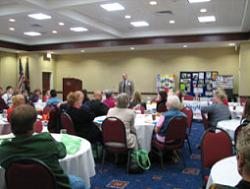
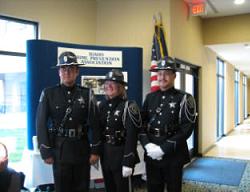
In an effort to provide a platform for sharing the issues areas throughout the region face, the idea was initiated for a summit that would play host to law enforcement agencies and NW groups. “The original idea for the event was generated at a 2005 crime prevention association meeting at which a number of crime prevention officers around the Treasure Valley area attended,” recalls Nampa Police Department Community Service Officer Elena Vigil. “As we discussed ways to maintain NW groups in our areas, it was suggested that we hold an event at which local agencies could get together and present workshops to train NW chair people.” That's precisely what occurred at the inaugural Treasure Valley Summit, which, after months of preparation, was held in October of 2006. “The event was a trial for us to find out if people would be interested in attending a half-day conference focusing on community crime prevention issues,” explains Miller. As it turns out, they were. In fact, they were so interested that one of the most frequent responses was that future events should be longer and feature even more workshops.
Planners took the feedback into consideration as they prepared for the 2007 event. This time, the conference was bumped from just a half-day to a full day, lasting from 8:00 am to 3:15 pm , and more workshops were added. “We had sent out emails to NW chairs and asked what kinds of issues they were interested in hearing about,” says Miller. What resulted was a series of workshops that focused on such topics as neighborhood event planning, apartment manager issues, gangs, understanding the criminal mind, drugs, residential issues, identity theft, traffic issues, and disorderly use in neighborhoods. Each of the workshops featured either a speaker or a panel of experts.
“People tend to look at NW solely as a way for reducing crime,” says Vigil. “The reality is, NW members need some help staying motivated, especially if they live in areas in which crime rates have decreased and it's easy for apathy to set in. In addition, NW chairs also need tools and resources from law enforcement agencies to take back to and share with their neighborhoods. The summit provides a way to accomplish both.”
In fact, the 2007 summit was an even greater success than its predecessor. “We received overwhelmingly positive feedback from attendees,” says Miller. “Of the 130 people who attended, 77 provided evaluations, and the majority gave fives and fours on a scale of one to five. It was very well put together, which was the result of another partnership, this one between representatives from law enforcement agencies throughout the region who made up the planning committee,” explains Miller, who chaired the committee.
Neighborhood Partnerships
When it comes to recognizing the importance of partnerships, Miller has plenty of experience from which to draw. For the past ten years, she's headed up the NW program in the City of Boise , which encompasses 300 groups and 25,000 homes. During the past decade, she has witnessed firsthand the value of working together. For instance, just recently, a new subdivision in the foothills of the City had started being built near an existing community. While no houses had yet been constructed, streetlights had been erected on the vacant street, and some uninvited guests had found their way there. “We began receiving crime reports in the area involving drugs, gangs, and graffiti, and it was all taking place on this vacant street,” explains Miller. The members of the NW in the neighboring community held a meeting, which Miller attended, and they began developing ways to do their part to resolve the issue. Residents began conducting extra patrol of the area, for example, and they went out of their way to travel the street, whether going to or coming from work each day. In a short amount of time, these efforts paid off. “The crimes that had taken place on the street are now completely gone. In the last month and a half, we have not had one report, much to the credit of neighbors who collaborated with one another to send a message to criminals.”
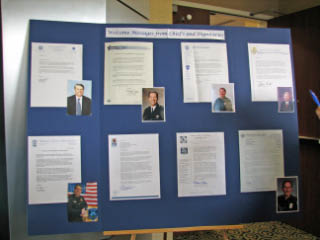 <
< 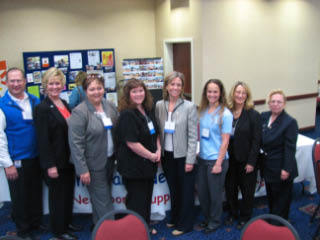
Effective partnerships have also resulted in success stories in neighboring Nampa . Not long ago, a group of residents living in a Nampa community that had no existing crime problems decided to join together to form a NW simply to be proactive and take preventative measures. This would prove to be a wise decision, for a violent and potentially dangerous incident occurred that involved two vehicles that contained passengers who were shooting. The vehicles crashed directly in front of the neighborhood and the occupants jumped out of their cars and over fences to enter the neighborhood. “As the coordinator, I called the chairman of the NW to explain what was going on. From there, all 22 of the block captains were contacted, children throughout the neighborhood were brought inside, and residents closed their garages and secured their homes,” says Vigil. “In spite of the fact that a police helicopter was hovering above and law enforcement were surrounding the area, not one resident called the police because we had communicated with one another, so everyone knew what was going on.” So successful were their efforts, in fact, that an article detailing the events was featured in the local newspaper, and Vigil attended a NW meeting that was held to thank her for her part in helping to protect the community.
Plans for the Future
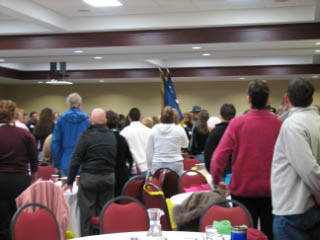 Because summit attendees have demonstrated tremendous thanks for and support of the previous two events, plans will soon be underway for a 2008 summit. Additional law enforcement agencies have already expressed interested in joining existing groups in the event. “Those involved with law enforcement know that residents are our biggest asset,” says Miller. “The majority of crimes are resolved because of community members calling in with tips. By tapping into good people who are willing to assist us, we're not only helping our neighborhoods, but making law enforcement look good, too. It just makes sense to join forces and work together.”
Because summit attendees have demonstrated tremendous thanks for and support of the previous two events, plans will soon be underway for a 2008 summit. Additional law enforcement agencies have already expressed interested in joining existing groups in the event. “Those involved with law enforcement know that residents are our biggest asset,” says Miller. “The majority of crimes are resolved because of community members calling in with tips. By tapping into good people who are willing to assist us, we're not only helping our neighborhoods, but making law enforcement look good, too. It just makes sense to join forces and work together.”
Vigil agrees. “It is important that we understand that protecting our communities is a shared responsibility and that we all have to work together. When law enforcement coordinators from neighboring areas can connect and all get on the same page, we will achieve even greater success in our neighborhoods.”



